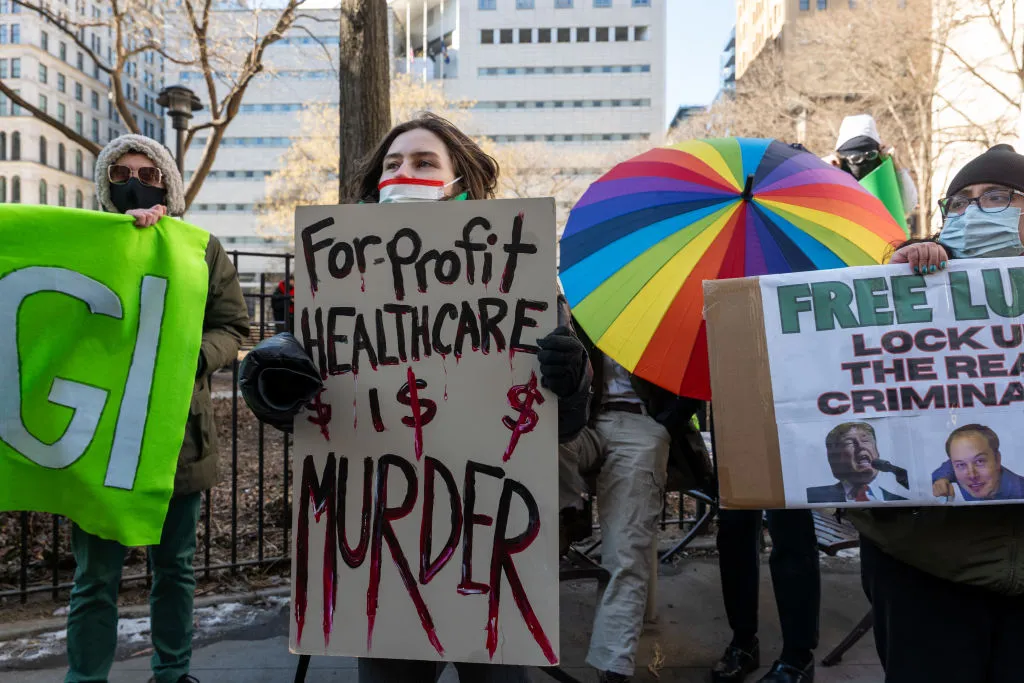Health insurers wrapped up 2024 in rough shape, recording falling profits from insurance businesses and releasing guidance suggesting that medical costs could continue climbing this year.
In the fourth quarter, payers continued to slog through elevated medical spending in Medicare and Medicaid. Higher costs popped up in once-safe commercially insured populations, too, suggesting American workers are sicker than before.
All told, major publicly traded insurers’ medical loss ratios, key metrics of spending on patient care, rose an average of 2.8 percentage points from the fourth quarter of 2023 to the fourth quarter of 2024.
That’s a massive change. Investors keep close tabs on changes to MLR, as variations of even one-tenth of a percentage point can translate to significant changes in the profits companies rake in from offering insurance.
The share of premiums spent on medical claims soared over the past year
Publicly-traded insurers’ medical loss ratios, Q4 2023 (left) to Q4 2024 (right)
Still, the fourth quarter was better than it could have been for insurers, analysts said. During calls with investors, companies also said they’re making progress on plans to recapture margins — though, those plans probably won’t start bearing fruit until 2026.
Medical spending outpaced premium gains
Higher MLRs coincided with lower operating profits for insurers’ health benefits businesses.
In the fourth quarter, all major payers but Centene and Molina reported lower income from their insurance plans compared to the prior year (despite each company reporting year-over-year increases to their revenue).
Most drastically, CVS’ Aetna division posted an operating loss of $757 million, compared to a profit of $266 million the same period in 2023. Humana’s insurance arm also posted steep operating losses of $646 million in the fourth quarter, larger than the $426 million loss it recorded the year prior.
Elevance’s health benefits operating income fell 73% year over year, while Cigna’s was down 47%. UnitedHealth emerged relatively unscathed by comparison, with operating income for its health benefits division down about 5%.
Only Centene and Molina reported year-over-year growth in income from offering insurance
Operating income of insurers’ health benefits divisions, Q4 2023-Q4 2024
Insurers blamed a variety of factors in fourth-quarter earnings calls with investors. However, much of the growing loss ratios can be chalked up to one major trend — higher spending on members in government programs — which has plagued insurers since 2023.
The cost of medical care for seniors in privatized Medicare Advantage plans remained higher in the fourth quarter than insurers expected. At the same time, payers were still absorbing a number of regulatory changes that lowered revenue.
Meanwhile, higher spending on Medicaid patients stemming from states rechecking members’ eligibility for the safety-net program hasn’t been matched by states increasing their rates.
Despite a deluge of promises from executives last year that they’re having productive conversations with state regulators to amend their rates, insurers closed out the fourth quarter still saying that Medicaid costs are higher than what they’re being paid.
Rates remain “insufficient,” said Felicia Norwood, who runs Elevance’s Medicare and Medicaid businesses, on the insurer’s investor call late last month.
To date, only Cigna has been insulated from elevated medical spending, given the insurer mostly sells employer-sponsored plans.
But that changed in the fourth quarter, with CFO Brian Evanko attributing the “vast majority” of its lower earnings to unexpected spending on big-ticket claims for workers, including specialty drugs and cancer treatments.
CVS also called out higher spending in its stop-loss plans, which protect employers from catastrophic medical spending.
Turning toward 2025
Insurers are attempting to resuscitate their profits this year, including by shedding unprofitable MA members. During fourth-quarter calls, major Medicare insurers said they’ve successfully lost members that were dragging down their margins — and shunted other beneficiaries into plan designs that give more control over spending.
Humana said it will lose 550,000 MA members — roughly one-tenth of its individual MA footprint — this year as a result of plan cuts.
CVS expects to lose a “high single digit” percentage of its MA members compared to the end of 2024, which will contribute to an overall expected membership decline of more than one million people this year, CFO Tom Cowhey said.
Less drastically, Centene lost about 200,000 Medicare members following the fall signup period for 2025, according to CEO Sarah London.
Meanwhile, insurers that increased their Medicare membership — UnitedHealth and Elevance — tried to reassure investors that growth is under control.
UnitedHealth, already the largest MA insurer, expects to add 800,000 MA members this year, representing about 10% growth. Elevance expects to add roughly 280,000, representing growth of about 8%.
During investor calls, executives for both insurers said that MA cost trend observed in 2024 was adequately factored into their plan bids for this year, and that plans were designed for margin improvement instead of growth.
They specifically pointed to growth in HMOs, plans that limit coverage to specific providers to give payers more control over spending, as evidence that the makeup of their MA populations have improved following open enrollment.
UnitedHealth feels “very good” about its membership, per CEO Andrew Witty; while Elevance feels “really good,” CEO Gail Boudreaux said.
Similarly Cigna, which is in the midst of offloading its risky MA business onto Chicago-based insurer HCSC, saw “attractive growth” in Medicare, including in HMO products, Evanko said.
“We’re ready to hand it off,” the CFO said.
Payers “appear to be prioritizing margins vs growth with fewer companies pushing for significant share gains in 2025,” wrote Lisa Gill, an analyst with J.P. Morgan, in a February note. “We think this strategy exhibits prudence and an acknowledgement that with the dynamic backdrop, ‘growth at all costs’ adds complexity and unpredictability.”
Still playing defense
Yet as insurers chart a path forward on improving margins, they face other issues that could keep spending elevated.
For one, though insurers expect Medicaid rate updates in the 3% to 4% range this year, the disconnect between payment and acuity is expected to continue into at least the first half of 2025, according to analysts.
Similarly, insurers are urging the federal government for a healthy Medicare payment hike in the spring, citing persistently elevated spending on seniors’ care.
Four of the seven major publicly traded payers expect medical costs as a share of premiums to be even higher this year than in 2024, according to financial outlooks.
Elevance, Centene, UnitedHealth and Cigna think they’ll spend a larger share of premiums on medical care this year
Insurers’ medical loss ratios, 2024 reported (left) vs. 2025 expected
(It’s worth noting that CVS and Humana, which both expect their MLRs to lower this year, dealt with the worst step-up in medical costs last year.)
Washington is also spurring significant uncertainty for the sector. Cuts to Medicaid are looking increasingly likely as Republicans in Congress look for ways to fund President Donald Trump’s tax plan. Any reduction in federal Medicaid spending would slam insurers like Centene and Molina, which bring in the lion’s share of their revenue from the safety-net program (and don’t operate health services businesses that hedge against volatility in insurance divisions).
In addition, many market watchers expect Congress to allow more generous subsidies for Affordable Care Act plans to expire at the end of this year. The loss of the subsidies — along with the Trump administration reducing funding for groups that prop up the exchanges — could lead millions of people to lose ACA coverage next year.
That’s also a serious problem for insurers like Centene that have relied on steady ACA margins to boost their performance amid Medicare and Medicaid volatility.
Insurers also face a significant hurdle in improving public trust, after the killing of UnitedHealthcare CEO Brian Thompson amplified existing ire against payers for their role in controlling Americans’ access to medical care.

Supporters of Luigi Mangione, the man accused of killing UnitedHealthcare CEO Brian Thompson, gather outside a Manhattan courthouse during a hearing in the case Feb. 21, 2025.
Spencer Platt via Getty Images
During investor calls, payer executives blamed other actors for problems with the U.S. healthcare industry, including higher patient utilization and price increases from hospitals and drugmakers, while acknowledging they could also improve.
Some made promises for reform. UnitedHealth is going to improve claims processing, procedure approvals and member communication, Witty said, while Humana will work to improve preventative care, communication and navigation, per its CEO, Jim Rechtin.
Cigna went a step further, pledging to make receiving medical and pharmacy care cheaper and easier for its customers before announcing specific actions it will take, like linking executive bonuses to customer satisfaction, roughly one week after its earnings call.








